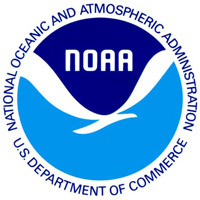
| Atmospheric CO2 Levels to Surpass 400PPM | 3 May 13 |

"I wish it weren't true, but it looks like the world is going to blow through the 400-ppm level without losing a beat," said Scripps Institution geochemist Ralph Keeling in a press statement. Keeling's late father began taking the measurements have come to form the 'Keeling Curve' At this pace we'll hit 450 ppm within a few decades," he added. The Mauna Loa carbon dioxide (CO2) record, also known as the "Keeling Curve," is the world's longest unbroken record of atmospheric carbon dioxide concentrations. This record, from the National Oceanic and Atmospheric Administration (NOAA) operated Mauna Loa Observatory, near the top of Mauna Loa on the big island of Hawaii, shows that carbon dioxide has been increasing steadily from values around 317 parts per million (ppm) when Charles D. Keeling began measurements in 1958, to nearly 400 ppm today. View April 29, 2013 Huffington Post articleView April 23, 2013 Scripps News article View Trends in Atmospheric Carbon Dioxide View Mauna Loa Observatory website View January 28, 2009 report Irreversible Climate Change Due to Carbon dioxide Emmissions View April 7, 2008 report Target Atmospheric CO2: Where Should Humanity Aim? |
|
 Print version Print version |
Top |
